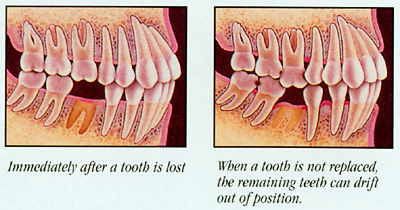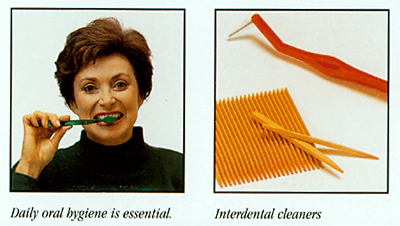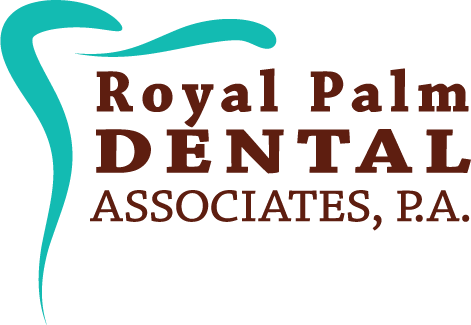If you’re missing one or more teeth, you may be aware of their importance to your appearance and dental health. Your teeth work together to help you chew, speak, sing and smile. When you lack teeth, it’s difficult to do these things. Fortunately, missing teeth can and should be replaced. You can restore your oral health and your smile with a fixed bridge.
What exactly is a bridge or fixed partial denture?
A bridge (also called a fixed partial denture) is a restoration which replace or spans the space where one or more teeth have been lost. There are two types of bridges-fixed and removable. Fixed bridges are bonded into place and can only be removed by a dentist. On the other hand, you can take out a removable bridge for cleaning. Removable bridges, while less expensive, may not be as desirable as fixed bridges and are not generally as stable.
Why do I need a bridge?
Your appearance, dental health and the proper functioning of your mouth are all important reasons for wearing a bridge. A bridge helps maintain the natural shape of your face and may help support yours lips and cheeks. The loss of a back tooth may cause your mouth to sink and your face to look older.
More importantly, though, your dental health may suffer when teeth are not replaced. Teeth were designed to complement each other. When a tooth is lost, the nearby teeth may tilt toward the empty space, or the teeth in the opposite jaw may more up or down toward the space. This places unusual stress on both teeth and tissues in your mouth.

In addition, the gum tissues and the bone that hold teeth in place can break down, increasing the risk of gum disease. Teeth that have tipped are difficult to clean, making them more likely to decay. As a result, even teeth may be lost.Missing teeth can also affect the way you chew and speak. Chewing on only one side may cause stress to your mouth. You also need your teeth to speak properly, since they help you make the many sounds needed in speech.How is a bridge attached?
A fixed bridge is commonly cemented to the natural teeth next to the space left by the missing tooth. A false tooth (called a pontic) replaces the lost tooth. The pontic is attached to the crowns (restoration that cover a tooth). Crowns, which are cemented onto the natural teeth, provide support for the bridge.
Traditional Fixed Bridge

1. Teeth adjacent to the gap are prepared.
2. The custom-made bridge is fitted and adjusted.
3. After adjustments are made, the bridge is cemented into place.
Are there different types of bridges?
Yes, implants attach artificial teeth directly into the jaw or under the gum tissue. Because they require surgery, candidates for implants should have good general health and have adequate bone to place an implant.
Implant Bridge

1. Before
2. A bridge is attached to implants
3. After
In some instances, a resin-bonded bridge, frequently called a “Maryland Bridge,” can be used to replace one or more missing teeth. Because the bridge is attached by a special procedure called bonding, it doesn’t require the use of crowns or extensive tooth preparation.
What materials are used?
Appearance and function are considered when selecting materials for bridges. Bridges are made form gold alloys, non-precious alloys, porcelain, or a combination of these materials. Porcelain is often bonded to either precious or non-precious metal.
How do I take care of my bridge?
It is very important to keep your remaining teeth healthy. Brush twice a day, and clean between the teeth with floss or interdential cleaners (specially shaped brushes as well as rubber, plastic or wooden items). These measures help remove a sticky film of bacteria called plaque. Plaque causes gun disease and dental decay.
A bridge can lose its support if the teeth or the bone that holds it becomes damaged by dental disease. Be especially careful to clean the areas under, around and between the bridge and your natural teeth. Dental floss threaders and special brushes can help you reach these areas. It is also important to visit your dentist regularly.

Remember, the ultimate success or failure of a fixed bridge depends on its foundation. Help keep your gums and remaining teeth healthy. Your dental health and your appearance are worth the effort!
